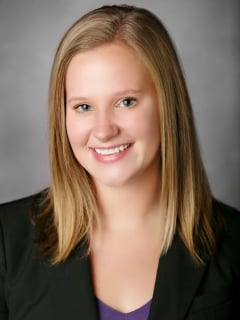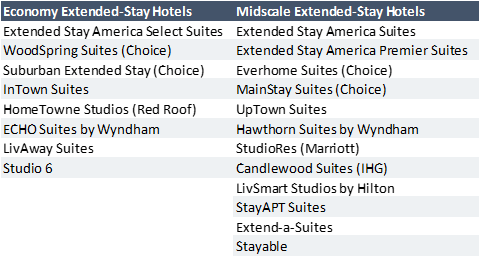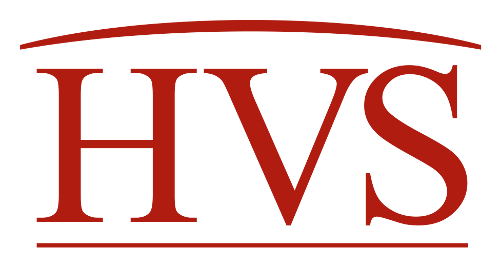 The two key differentiating factors between economy and midscale extended-stay hotels are the quality of the finishes and the price point. Economy extended-stay hotels typically offer a more budget-friendly option for guests, focusing on basic, functional accommodations with limited extra features. These properties normally provide guestrooms ranging from 250 to 300 square feet, and amenities are largely optional, including a guest laundry area, a fitness room, and weekly or bi-weekly housekeeping. Rooms are equipped with kitchens for guests who prefer to cook their own meals, adding convenience for longer stays.
The two key differentiating factors between economy and midscale extended-stay hotels are the quality of the finishes and the price point. Economy extended-stay hotels typically offer a more budget-friendly option for guests, focusing on basic, functional accommodations with limited extra features. These properties normally provide guestrooms ranging from 250 to 300 square feet, and amenities are largely optional, including a guest laundry area, a fitness room, and weekly or bi-weekly housekeeping. Rooms are equipped with kitchens for guests who prefer to cook their own meals, adding convenience for longer stays.Midscale extended-stay hotels, on the other hand, offer a higher level of comfort and service, making them more expensive than economy options. Rooms in this category are generally larger, ranging from 300 to 350 square feet, and often come with additional amenities such as a complimentary breakfast, a pool, a guest laundry area, and more comprehensive fitness facilities. Housekeeping is typically provided weekly, and similar to the economy hotels, the guestrooms feature kitchens. These midscale properties cater to guests seeking a balance of affordability and more comfortable, enhanced accommodations during longer stays.
The classification of brands within each category is based on STR classes, which help distinguish between the service levels of extended-stay options. Examples of hotel brands that fall into each STR category are listed below.

Profitability Analysis
To study the profitability of economy versus midscale extended-stay hotels, we reviewed actual hotel operating statements for properties across the United States, including those operating as the above-listed brands. Our analysis aimed to answer a crucial question in the hospitality industry: which type of extended-stay hotels is more profitable—economy or midscale? Within each category of hotels, the sample ranged from 60 to 150 historical, year-end operating statements for 2021 through 2024, as well as 2019. We examined key financial metrics such as house profit and gross operating profit (GOP), which measure profitability at different stages of hotel operations.House profit: Operating profit before hotel management fees, real estate and property taxes, insurance costs, reserve for replacement, and other fixed items
Gross operating profit (GOP): House profit less hotel management fees
Our findings show a distinct difference in profitability between economy and midscale extended-stay hotels. Properties in the economy segment typically operate with lower price points, which leads to a leaner, more efficient operating model. As a result of the longer length of stays at economy properties, minimal staff, and limited facilities and amenities, these hotels tend to operate at a notably higher profitability level compared to midscale extended-stay hotels. On average, economy extended-stay hotels achieved GOPs in the mid-50s, while midscale properties recorded GOPs in the mid-40s. The results of our analysis are presented below.
Average Profitability of Economy Extended-Stay Hotels Surpasses
Profitability of Midscale Extended-Stay Hotels

This difference underscores the advantage of the simpler, more cost-effective operation in the economy segment, where longer-term stays contribute to increased profitability despite lower occupancy levels. In contrast, midscale extended-stay hotels often face a slightly more complex operating structure due to the offering of more frequent housekeeping service or additional amenities such as free breakfast, fitness rooms, and pools. These added facilities or services, while appealing to guests, introduce higher costs, particularly in areas like payroll and supplies. The higher price point of midscale properties in our sample tends to result in a lower percentage of extended-stay guests, which may further affect profitability.
Conclusion
As costs continue to rise at a faster pace than hotel RevPAR growth, developers and brands are embracing the extended-stay model more given its attractive offering of a lean operation. However, understanding the way each brand and product type fits into the competitive landscape is also crucial. Profitability for an individual hotel can be significantly influenced by factors such as extended-stay demand contribution and the specific service or amenity offerings in different markets. The variation in these elements across brands and regions further highlights the importance of tailoring strategies to local market conditions. While the performance of individual hotels can vary based on factors such as location, size, and age, the broader national trend suggests that economy extended-stay hotels offer a more profitable model due to their lower operational costs and longer guest stays.Our unique methodology, which involves conducting primary interviews within local markets, enables us to gather real-time insights and current data. This approach ensures an in-depth understanding of the dynamics of different markets and hotel classes. For more information on this topic or for assistance in making investment decisions that align with your specific goals and risk tolerance, we invite you to reach out to Katy Black, MAI, at [email protected] or +1 (970) 305-2229.
About Katy Black, MAI
Katy Black, MAI, is the Managing Director and Leader of the consulting and valuation practice of the Denver office. She is an appraisal and consulting expert in the lodging markets throughout the Western U.S. Since joining HVS in 2013, Katy has gained diverse experience spanning limited-service motels, city-center hotels, luxury assets, golf resorts, and mixed-use developments, as well as resort-residential and rental-management programs. She specializes in high-end, complex resorts and has provided valuation and consulting services for gaming assets and large hotel portfolios. In addition, Katy has worked extensively on unique lodging properties, such as glamping resorts, casino hotels, hostels, and waterpark resorts. Katy graduated from the University of Delaware with an honors BS in Hotel, Restaurant, and Institutional Management. She also earned an MS in Accounting from the University of Akron. She is a state-certified general appraiser and a Designated Member of the Appraisal Institute (MAI). Contact Katy at (970) 305-2229 or [email protected].

0 Comments
Success
It will be displayed once approved by an administrator.
Thank you.
Error